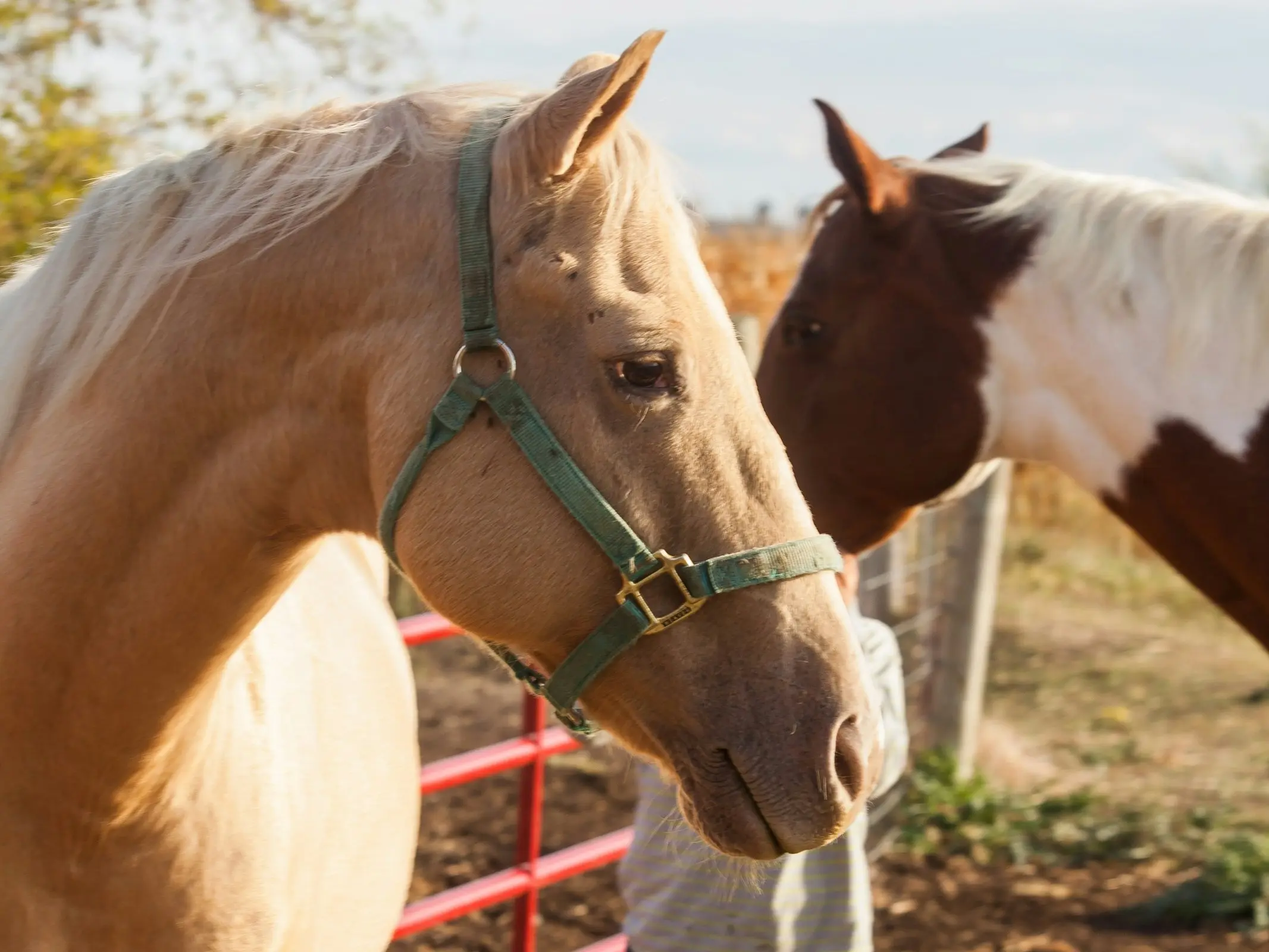
The champagne gene is a rather recent discovery in the world of horse color and it has a diluting effect on all of base coat colors. This pigment alteration can exhibit in a showy display of colors, which can have an almost metallic sheen.
Champagne Dilution
This dilution turns red pigment to a golden yellow in color and black pigment to anything from grey to chocolate brown. Not a common dilution, it can be found in a few breeds like the Quarter Horse, Spanish Mustang and some of the gaited breeds. Champagne animals can be incorrectly mistaken for silver dapples, palominos, blue roans and even appaloosas.
Champagne Characteristics
There are a few characteristics exclusive to animals affected by champagne, which makes it one of the dilutions that can be visually identified with a reasonable degree of accuracy. It is one of the few dilution genes that affect the skin as well, making it a dusty pink color. They can also have faint dorsal stripes, but dark like a true dun. Otherwise the champagne coat is very uniform in color, with no obvious counter shading.
Not all horses with a metallic sheen are champagne – Akhal-Teke animals often display a glowing coat and champagne doesn’t run in the breed. A hot climate breed, the hairs on an Akhal-Teke are essentially hollow, giving them a sheen which mimics that of a champagne animal.
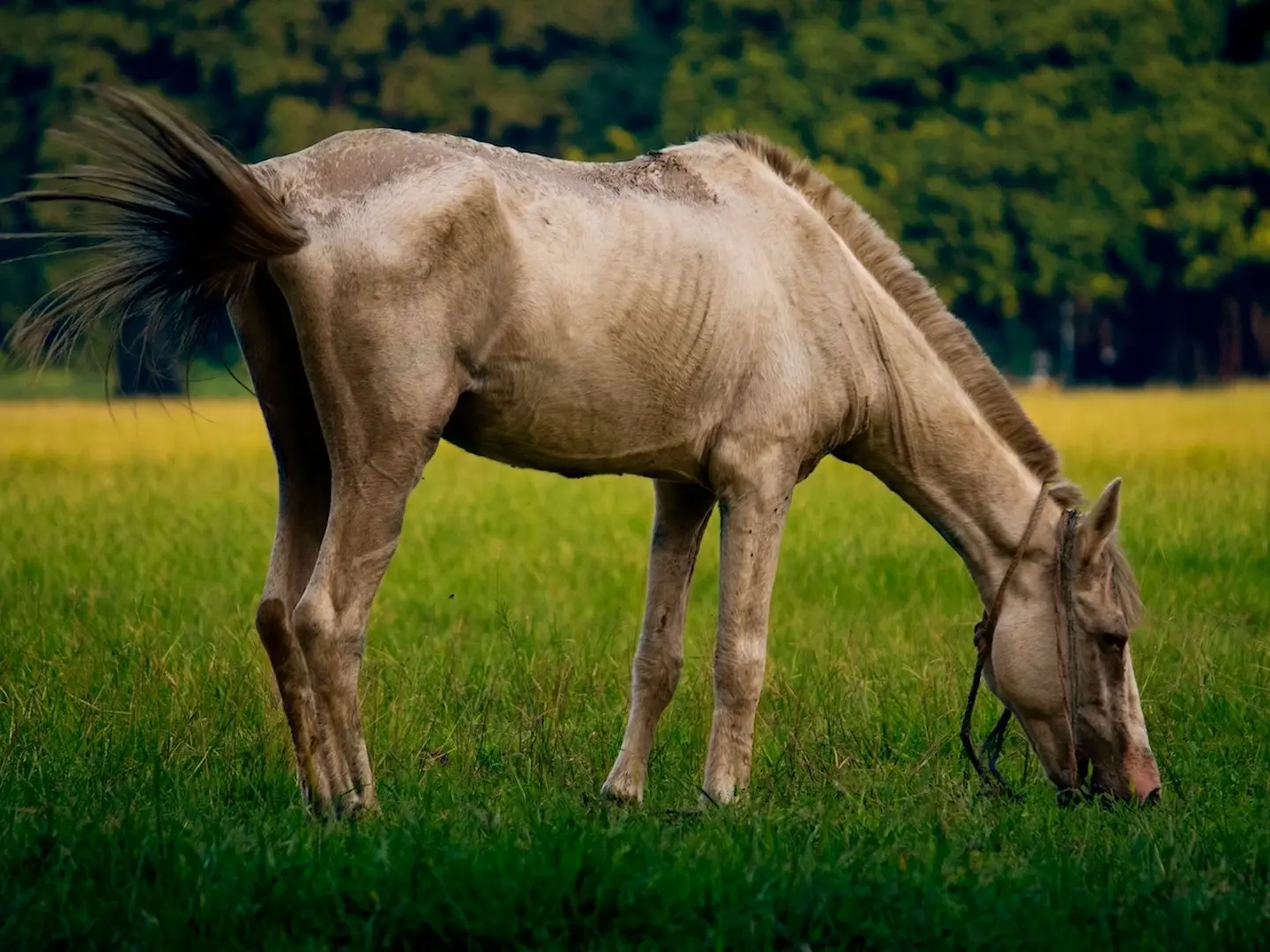
Metallic Sheen
Perhaps the most sought after characteristic of this dilution is an amazing shiny metallic coat. Not all affected by the gene will display the sheen and it’s not really understood why genetically. Interestingly enough, this can make the animals difficult to photograph.
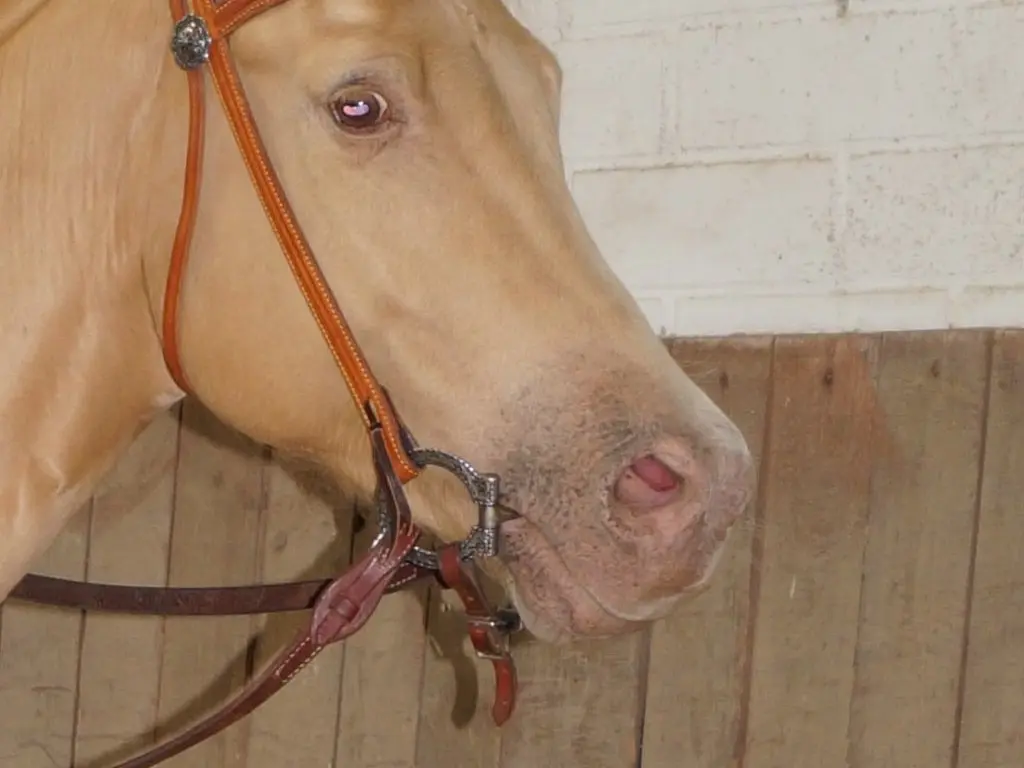
Freckles
Champagne skin is a purple-pink in color, but not like other light skinned horses. Sometimes called pumpkin skin, it’s light when they are born and tends to grow darker as they age. They will also often develop darker freckles around their mucus membranes.
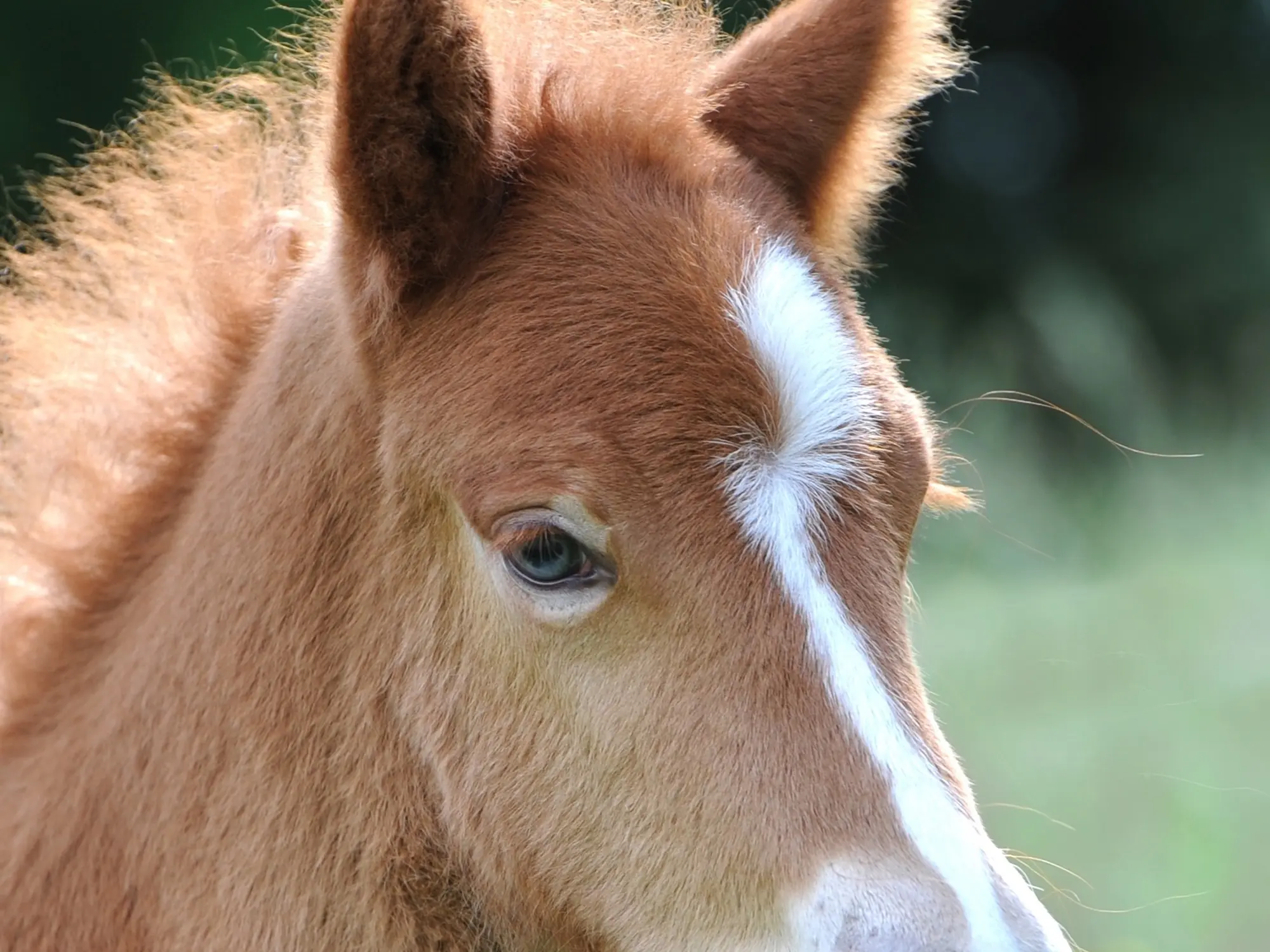
Light Eyes
This dilution also affects the eyes, which is another easy way to determine the gene. Unlike the dark brown eyes of most light animals, champagnes are often born with soft blue eyes that become green as they darken and change again to golden amber or hazel.
Champagne Shades
The champagne gene affects the bases, along with some of the modifiers and dilutions to varying degrees. Any animal affected by the gene can carry a metallic sheen and reverse dappling in their coat.
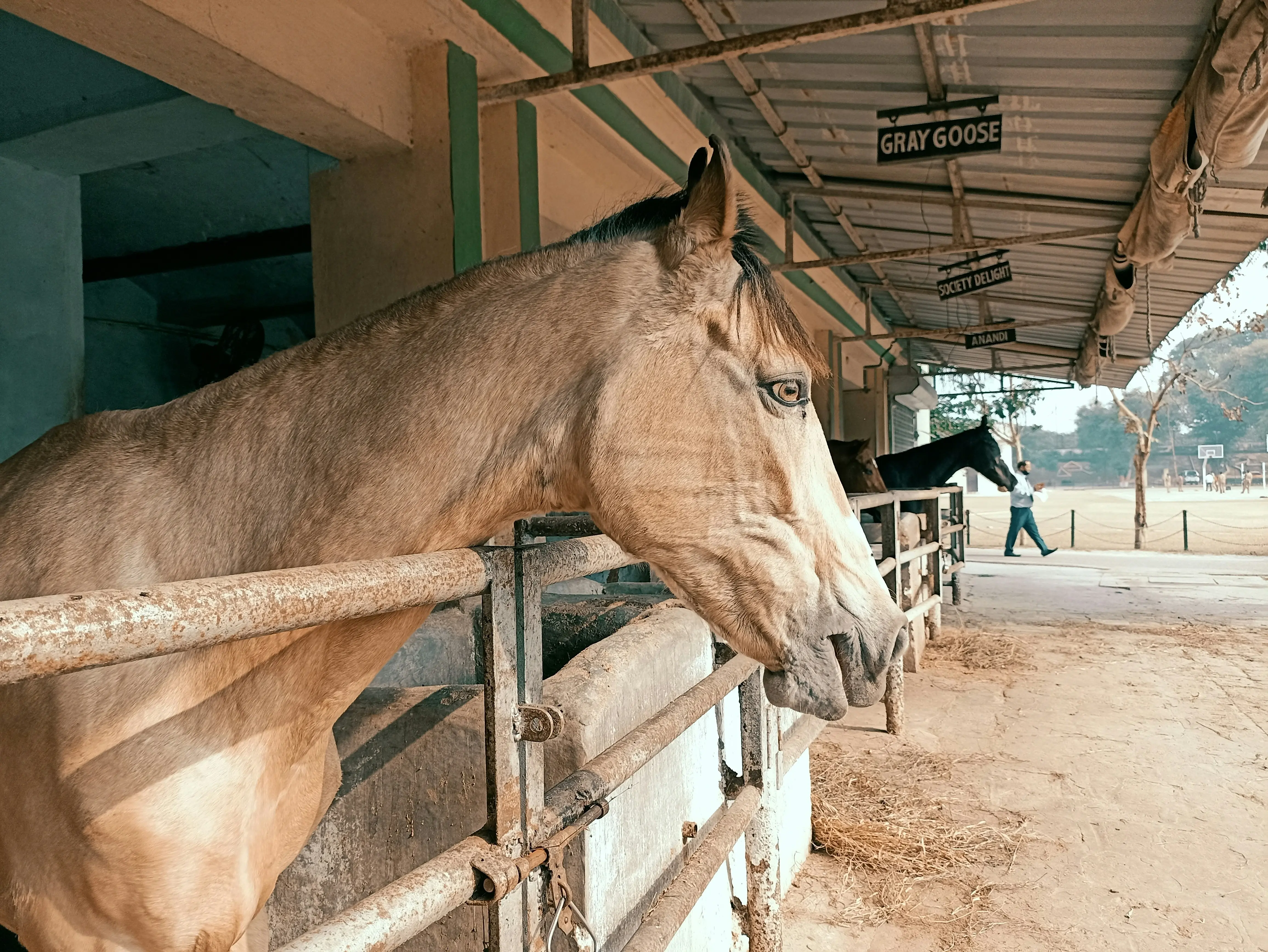 Black Base
Black BaseOn a black base the champagne gene dilutes the body hair to a pale golden brown, while mane and tail turn a shade of dark brown.
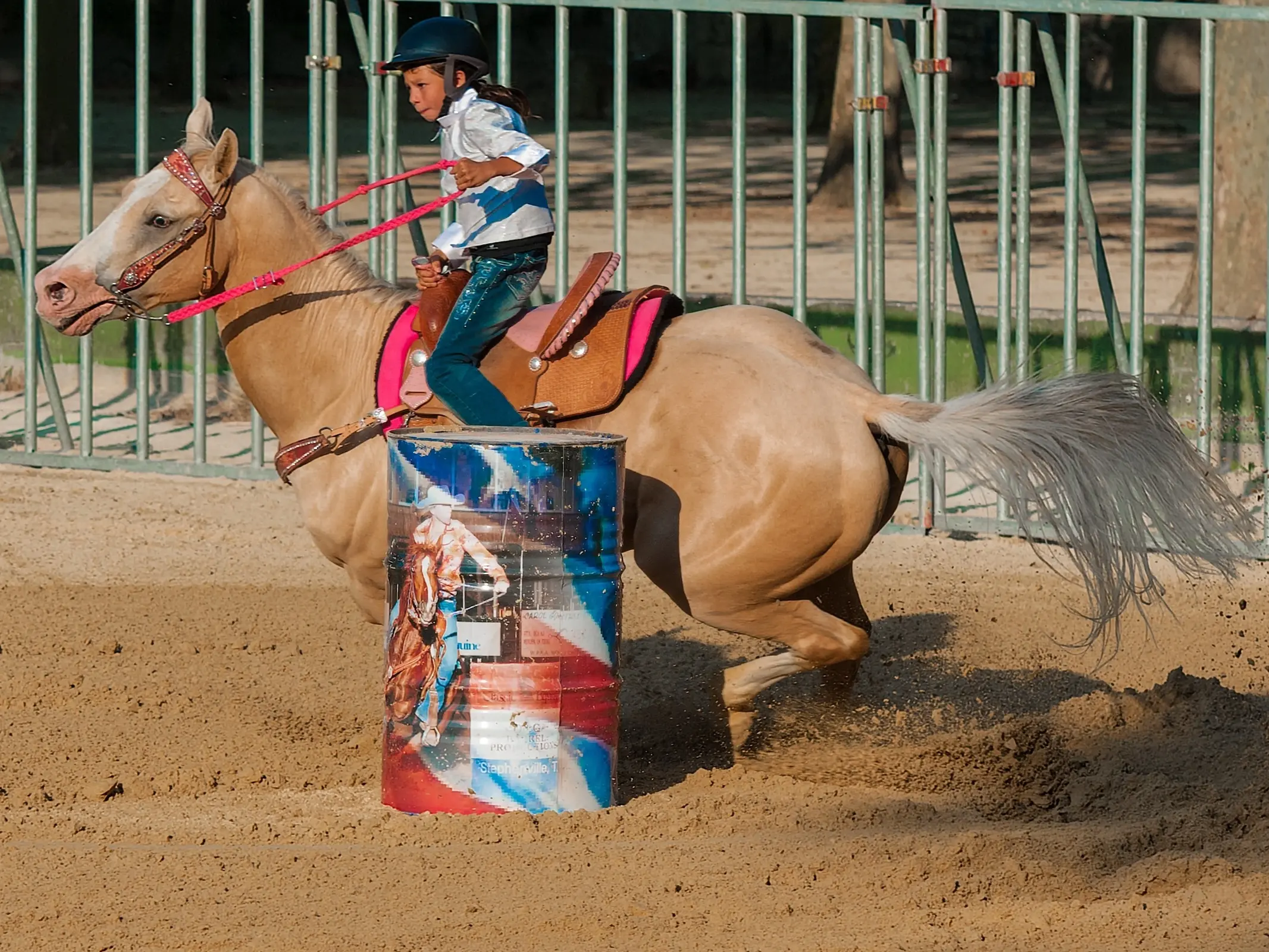 Chestnut Base
Chestnut BaseOn a chestnut base the champagne gene dilutes the body hair a golden color and the mane and tail to various shades of flaxen.
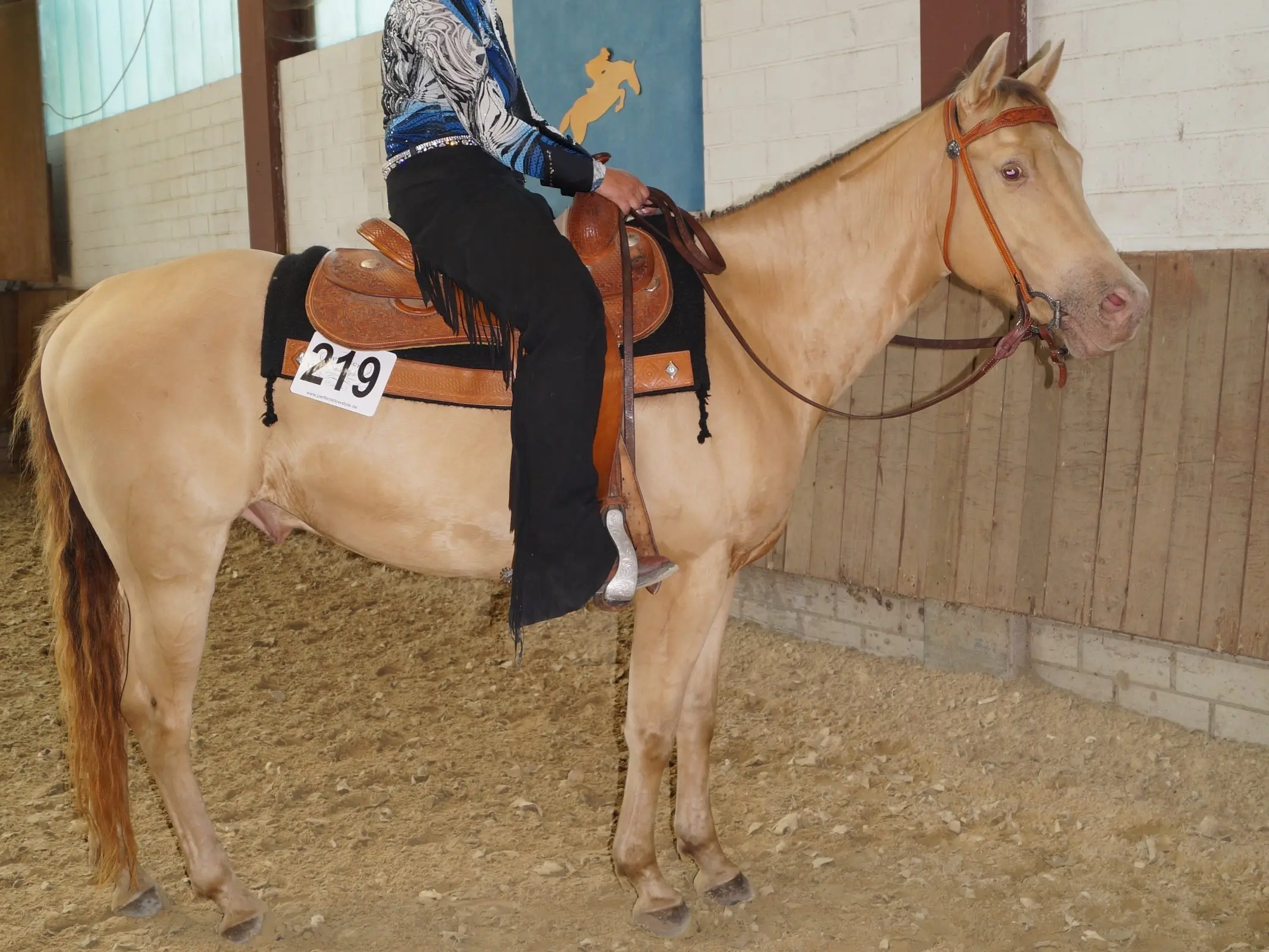 Bay Base
Bay BaseChampagne is not as strong on a bay coat, diluting the body to a shade of golden red and leaving the mane, tail and points dark brown.
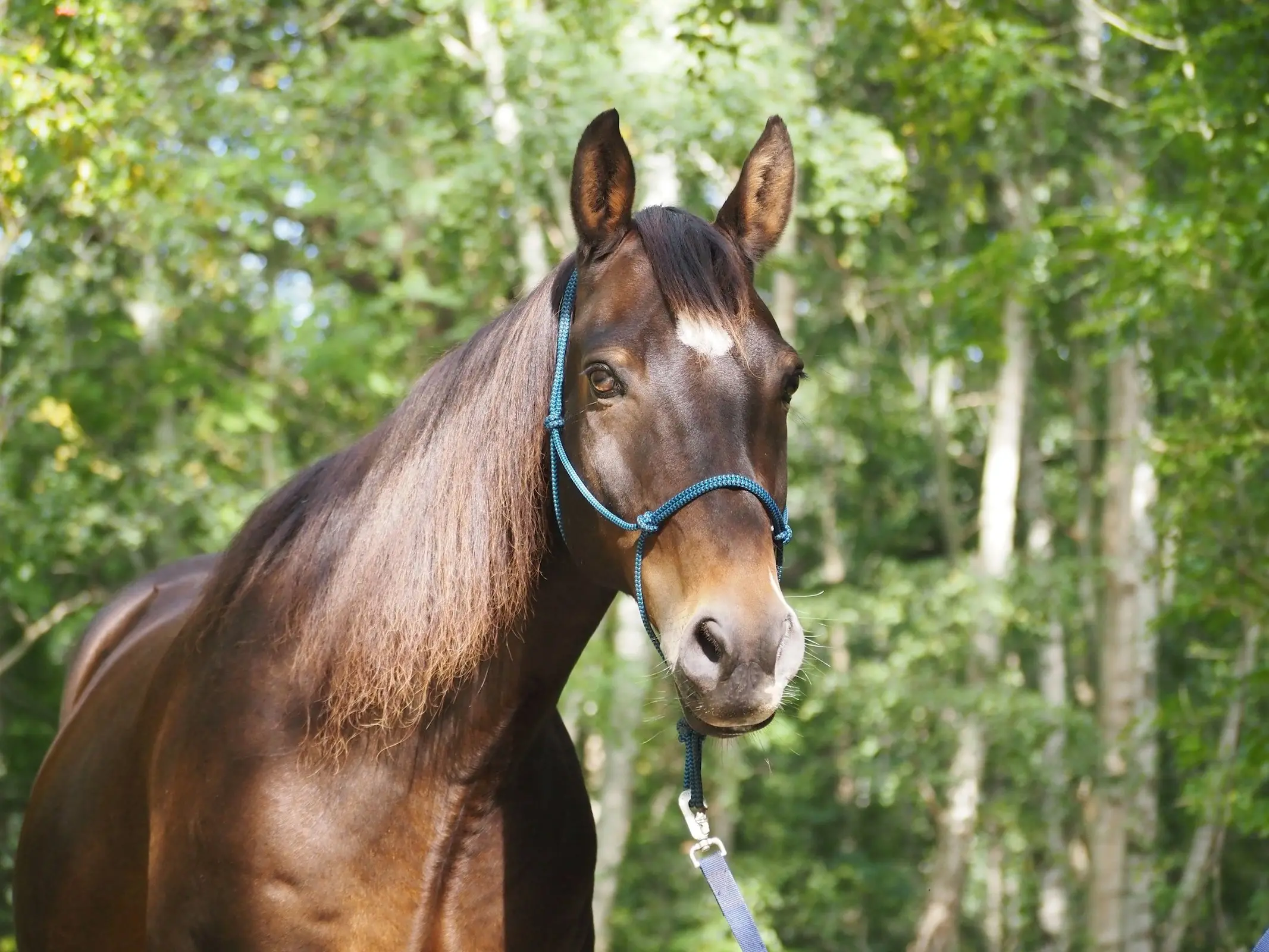 Seal Base
Seal BaseOn a black base the champagne gene dilutes the body hair to a pale gold or brown and the mane and tail to a shade of dark brown.
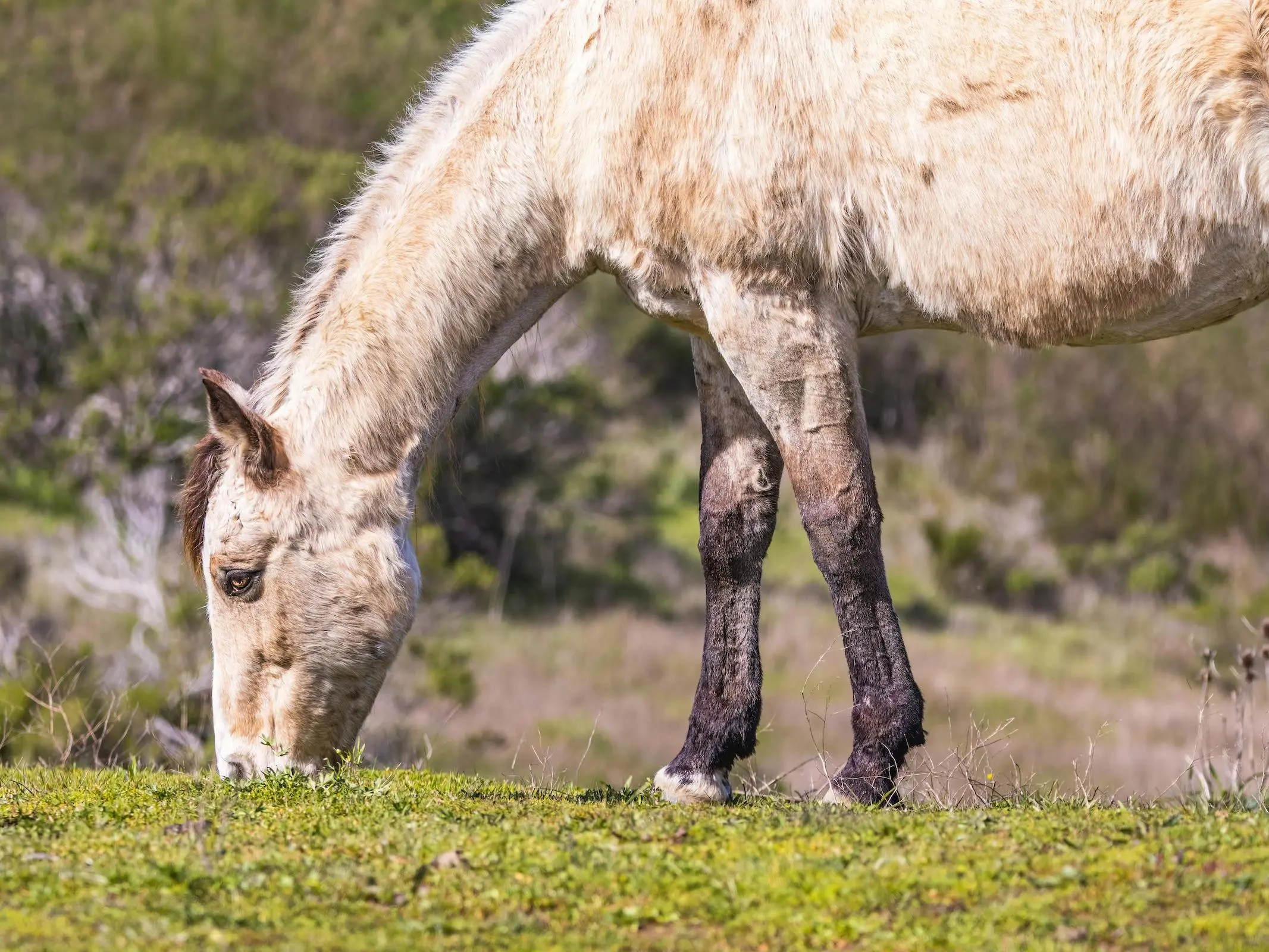 Mealy Modifier
Mealy ModifierMealy only really affects the soft spots of an animal, making them lighter. This could be make them more difficult to visually identify.
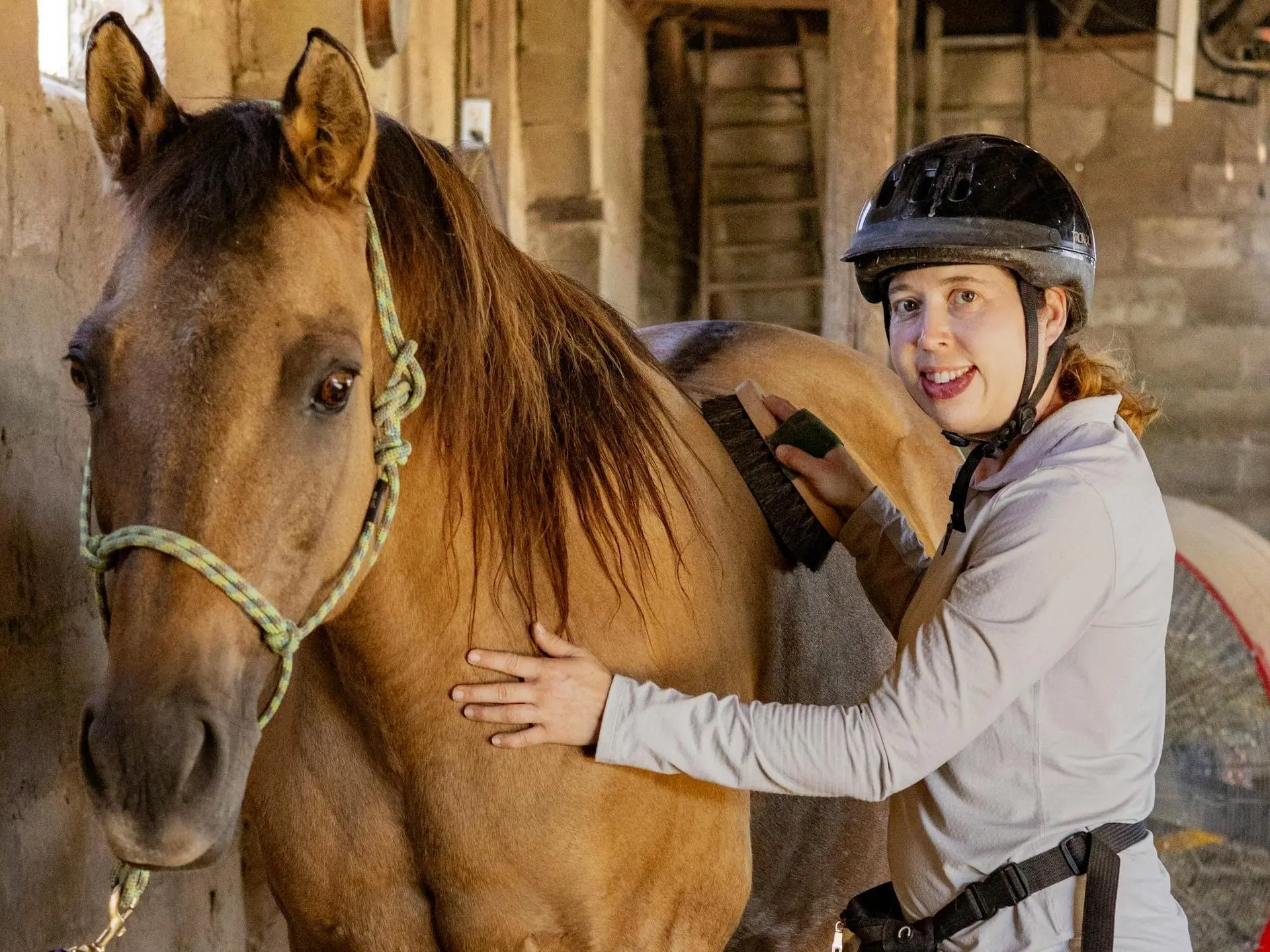 Dun Dilution
Dun DilutionChampagne can dilute any base color dun animal, as the dun mutes color, champagne enhances them with a shine, often making eyes light.
Learn More About the Champagne Dilution
Be sure to check out a guest post with a more complex look at the champagne gene: Equine Champagne Gene